Midweek Review
Rightwing economics or centre-left Opposition?
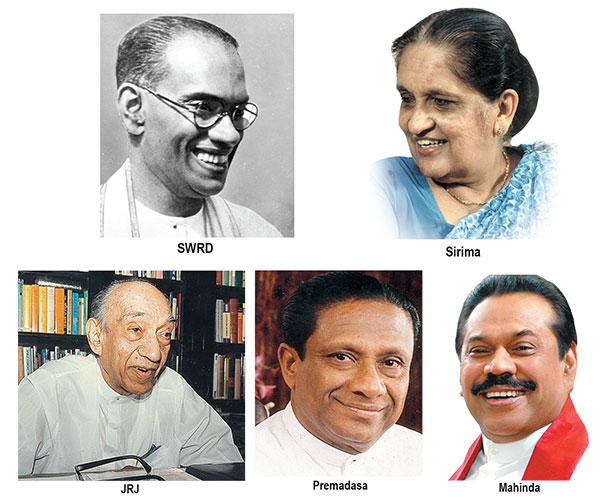
By Dr. DAYAN JAYATILLEKA
The situation is ripe for a progressive, social democratic, centre-left Opposition with necessarily populist appeal, but can there be one if an archaic, conservative, rightist economic theory is propounded as an alternative to the government’s oligarchic crony-capitalism?
How can the main Opposition party become a truly progressive-centrist formation which can be a magnet for voters from the vast bloc that voted for the Rajapaksas/Pohottuwa? What must it do?
The answer to that is clear and simple, and it isn’t mine. Thirty years ago, the UNP held power at the Presidential, Parliamentary and Pradesheeya Sabha levels, i.e., executive, legislative and local authority levels. That was the last time it did so. The leader responsible for that achievement made a typically unorthodox and fascinating remark while addressing his last May Day rally in 1992, at Galle Face, a year before he was assassinated by a Tiger suicide-bomber. Ranasinghe Premadasa made a surprising and pointed reference to SWRD Bandaranaike:
“…The late Prime Minister SWRD Bandaranaike…left the UNP and formed the Sri Lanka Freedom Party because he thought that his views cannot be implemented through the UNP. If one were to take into account the changes that have taken place in the UNP between then and now, I am sure that if he were still alive, he would have rejoined the UNP…When you look at it from that point of view, you will be able to guess which May Day rally he would have attended if he were alive—the rally at Galle Face or the one at Campbell Park.” (President Premadasa: His Vision and Mission, Selected Speeches, p 192)
What Premadasa says here is that SWRD Bandaranaike with the progressive, moderate nationalist, centre-left views (the SLFP’s founding document used the definition ‘social democratic’) he held at the time he ruptured with the UNP because he thought they could not be accommodated, would have felt compelled and comfortable enough to rejoin the UNP because it had been transformed so radically as to be able to accommodate and represent such personalities and perspectives.
Translated into today’s politics, it can be understood as an injunction to the post-UNP successor party (led by Premadasa’s son) to be a party so configured that it can win over the voters and personalities of the progressive centre, the moderate nationalists, by representing their ideology, sentiments and grievances. In short, an Opposition party capable of winning over the centre-left SLFP and SLPP voters; the Rajapaksa voters.
JR-Ranil or Premadasa?
The ongoing and deepening economic crisis is tailor-made for a ‘Premadasist’ intervention, for three reasons:
(a) Globally, the Covid-19 pandemic has been acknowledged as proving the need for more investment in public goods and social infrastructure, rather than rely on the ‘magic of the marketplace’ with its profit motive.
(b) President Premadasa demonstrated that even in a context of extreme crisis, is it practically possible to revive economic growth, increase industrial exports and foreign investment while simultaneously, not sequentially, transferring real income to the poorest, increasing the real wages of the people and reducing inequality.
(c) The Opposition is led by his only son. It would be as absurdly incongruous for an Opposition party, led by President Ranasinghe Premadasa’s son not to adopt the Premadasa development paradigm and policy as it would be someday for an Opposition party led by Namal Rajapaksa, not to have his father Mahinda Rajapaksa’s as symbol, his achievements as template, and Mahinda Chinthanaya as the basis of its guiding ideology.
The problem is that there is an ideological inclination on the part of some in society and Opposition politics, to ignore the Premadasa development model and philosophy, pat him on the back for ‘reforms’, and elevate instead, rightwing economic doctrines. In international terms these are the economic ideas that President George HW Bush (Bush Sr.), a moderate Republican, derided as “voodoo economics”.
The UNP never won a Presidential election, won only two parliamentary elections, 15 years apart, with never a second consecutive term in governmental office, after it dumped the Premadasa development paradigm and shifted to neoliberal economics, or shifted back to the pre-Premadasa economic model which helped cause the Southern uprising.
With its leadership and Presidential candidate who did far better in November 2019 than the party did before (Feb 2018) or since, the post-UNP Opposition is more organically suited for a frankly neo-Premadasist strategy for economic revival and social upliftment, which the current crisis demands.
JR+BR?
A slightly surreal slogan was tweeted recently, claiming that “we need JR+Shenoy reform once again”. This relates to the ideas of rightwing economist BR Shenoy who produced a pamphlet in 1966 which was adopted as a policy platform by JR Jayewardene, then a Minister in the Dudley Senanayake Cabinet of 1965-’70.
This policy perspective is wrong headed several times over, starting with the contextual fact that the JR+Shenoy platform was not conceived as alternative to the parental precursor of the current Rajapaksa government’s policies, namely the Sirimavo Bandaranaike-NM Perera policies of the coalition government of 1970-’77.
The JRJ-Shenoy policy doctrine was one corner of an intra-governmental UNP policy debate in the mid-1960s. Today it is being revived at the second corner of a bipolar patterning of policy discourse, i.e., in an unhealthy polarisation.
Shenoy Syndrome
As a precocious lad who spent time in the editorial offices of Lake House and hung out with my father and his journalist colleagues and buddies, I was quite aware of the Shenoy episode real-time, because BR Shenoy was tapped, and his product promoted, by Esmond Wickremesinghe, the Managing Director of Lake House (and Ranil’s father). That episode was part of a policy debate that rocked the UNP government of Prime Minister Dudley Senanayake in 1965-1970.
Far from being the antipode of the statist closed economy of the Sirimavo regime, the JR+Shenoy (actually JR+Esmond+Shenoy) platform squarely targeted the genuinely liberal-welfarist economics of the PM Dudley Senanayake and his Planning Ministry tzar, Dr Gamini Corea.
It is absurd and dangerous to exalt the JR+BR Shenoy line today, when the logic of the Dudley Senanayake-Gamani Corea response at that time has been tragically validated by our political history: “It is wiser to spend on welfare, than to cut welfare and have to spend much more on military expenditure later.”
As the John Attygalle Report (he was the IGP, but the report was co-authored by D.I.G Ana Seneviratne) on the pre-1971 JVP revealed, and the statements of the accused in the main trial of the Criminal Justice Commission (CJC) confirmed, the movement was founded for armed revolution partly as a response to the ideological struggle within the UNP government. Rohana Wijeweera’s view was that the JR Jayewardene-BR Shenoy project would require the ouster of the Senanayake faction, the installation of an Indonesian style dictatorship, and the scrapping of national elections scheduled for 1970.
This was not as wildly outlandish as it seemed. The Indonesian coup and massacre had taken place in September 1965. Esmond Wickremesinghe and those who backed the JR+Shenoy programme against Senanayake liberal-welfarism, were applauding the post-coup Indonesian economic model. My father Mervyn de Silva had been in Indonesia (with his wife and son) at the invitation of President Sukarno’s Foreign Minister Dr. Subandrio for the celebration by Afro-Asian journalists of the 10th anniversary of the Bandung conference virtually on the eve of the coup. Mervyn was the last foreign journalist to interview DN Aidit, leader of the PKI (the non-violent Indonesian Communist Party) who was murdered by the Army a few months later while in hiding, unarmed. My father was among the few (I’m being generous here) in the Lake House press writing against the Indonesian coup and the massacre of 1965, while “the Indonesian model” was being promoted.
Coiled for armed resistance to a dictatorship which never came at the hands of the UNP Right identified as JRJ and Esmond Wickremesinghe equipped with the BR Shenoy agenda, the JVP uncoiled uncontrollably on the watch of the elected successor government, the SLFP-led UF coalition in 1971.
It is not that today’s JVP or FSP is dabbling in any way with violent resistance or ever likely to, but a worker-peasant-student social movement radicalised by the policies and political culture of the Gotabaya presidency, has grown to almost the same capacity as in the 1960s, and if ‘JR+Shenoy’ economic policies are followed after the Rajapaksa regime is inevitably turfed-out, the social explosion will occur no less inevitably on the watch of the incoming ex-UNP administration.
Development Debate
Today’s Lankan economic neoliberals (who call themselves ‘economic liberals’) target a giant of Third World economic thinking, Raul Prebisch. The bridge to the tradition of Prebisch, and indeed the great Ceylonese contribution to the global economic debate, was not the Sirimavo Bandaranaike-NM Perera regime, but rather, those who had been the targets of JRJ and Shenoy in the policy debate within the UNP of 1965-1970: the liberal-welfarist progressives of the Planning Ministry under Prime Minister Dudley Senanayake, namely Dr. Gamani Corea and his deputy, Godfrey Gunatilleke.
In the 1970s, the Lankan node of ‘Third Worldist’ progressive development thinking was the MARGA Institute, which was targeted by the UF coalition government, especially the rightwing Minister Felix Dias Bandaranaike and the Communist Party.
The Gamani Corea-Godfrey Gunatilleke perspective that JRJ+BR Shenoy (plus Esmond Wickremesinghe) had targeted within the UNP government of 1965-1970 and eventually supplanted, found itself revived, revised and reaccommodated within the economic paradigm of Ranasinghe Premadasa.
Prime Minister Premadasa’s extempore remarks at the panel discussion on the sidelines of the UNGA 1980; his invocation of justice for the global South at the UNGA 1980 and the Nonaligned Conference in Harare 1986, are evidence of his commitment to the international tradition of development thinking which Dr. Gamani Corea was a giant of, but is reviled by today’s para-UNP economic neoliberals. (https://www.unmultimedia.org/avlibrary/asset/2114/2114561/)
It is hardly accidental that the founder-Chairperson of the Institute of Policy Studies (IPS), at its initiation by Finance Minister Ronnie de Mel and through the Premadasa Presidency, was Dr. Gamani Corea rather than an ‘economic libertarian’ or ‘classic economic liberal’.
Premadasa Project
The formula that ‘we need JR+Shenoy reform once again’ also overlooks the history of the evolution of policy within the UNP in the Opposition in 1970-1973. The Dudley Senanayake line was being eclipsed, the JRJ line was becoming dominant, but a third line was coming into view, which was to be validated by real history when the ‘JR+Shenoy’ paradigm was a causative factor of the civil war in the south.
This ‘third paradigm’ was Ranasinghe Premadasa’s, an early articulation of which was his 4th April 1973 address to the Colombo West Rotary Club. He was so committed to that speech (delivered several years before Susil Sirivardhana joined him) that he republished it in the ‘SAARC Summit special supplement’ of the Daily News during his Presidency, accompanied by an introduction in bold type which read: “The seeds of today’s concepts were sown years ago…President Ranasinghe Premadasa, then First Member of Parliament for Colombo Central was invited by the Colombo West Rotary Club to deliver an address on the topic ‘A Plan for Sri Lanka’ at a luncheon meeting of the Club. The speech was delivered when President Ranasinghe Premadasa was only an Opposition member of Parliament and portrays the vision of a young politician of what he thought was the best for Sri Lanka”.
That he chose to reproduce it in the SAARC special supplement (1991) indicates that this perspective is one he wanted the outside world to know about, and which he hoped to radiate in the region.
In April 1973, he wrestled with the same problem that the economy faces today– the crisis of foreign exchange and dependency—and gave an answer that is distinctively redolent of the Rooseveltian New Deal (his 1988 Presidential election manifesto was to be entitled ‘a New Vision, a New Deal’):
“…If the problems of foreign exchange, development and unemployment are to be satisfactorily tackled, a massive development venture has to be launched to provide the necessary infra-structure such as a network of roads, a network of electricity, a network of irrigation and a network of domestic water supply. With the launching of such a scheme large number of people could be gainfully employed. Together with development of the infrastructure the country’s agricultural and industrial ventures will automatically improve. As a result, foreign exchange could be conserved. People will get more money into their hands thus enabling them to purchase their requirements. The question of subsidies will eventually be eliminated. We can solve our problems. Scarcity of foreign exchange is no obstacle. To earn foreign exchange, we must increase production; to increase production we must develop our national resources, and if we are to develop our national resources, we must harness the human potential that we have in abundance. It is futile to go on bended knees to foreign countries begging for assistance…” (Republished as ‘People’s Participation in Government’, CDN Nov. 21, 1991.)
After the UNP victory of 1977 and the installation of ‘JR+Shenoy reforms’ the evidence of its downside piled up in the 1980s from the reports of various UN agencies which had replaced ‘classical liberal economics’ with indices of inequality, the physical quality of life index (PQLI) and later the Human Development report (HDR), under the intellectual impact of a global struggle for ‘Another Development’ (as it was conceptualized) in which Gamini Corea and Godfrey Gunatilleke were the foremost Sri Lankan figures.
Prime Minister Premadasa appointed the Warnasena Rasaputram Commission. Janasaviya was Premadasa’s response to the revelations of the Rasaputram Report. The hubris of the Open economy and the ‘JR +Shenoy reform’ model had evaporated with the bloody near-extermination of the UNP in the latter half of the 1980s by Sinhala youth from the South (just as Premadasa had predicted).
Open Economy, ‘Economic Democracy’
“If anything, I am for economic democracy” Premadasa told civil service legend Neville Jayaweera in a substantive interview given to the latter published as ‘Charter for Democracy’ (1990). For him, ‘economic democracy’ meant “turning the nation into one where ‘have-nots’ become ‘haves’”.
This was Premadasa’s perspective on the open economy:
“In a world of economic interdependence, those who are self-dependent grow in strength. We live in a world society. We cannot close ourselves off from the world. Yet, we must be free to live and develop as we wish to. We will provide all the conditions for economic growth in an open economy. But an open economy does not mean an economy dictated to by others. An open economy does not mean an economy run for the benefit of others. An open economy must first benefit Sri Lankans before it benefits outsiders.” (‘Address at the Inauguration of the Koggala Export Processing Zone’-June 14th 1991, in ‘President Premadasa: His Vision & Mission-Selected Speeches’, pp 89-92.)
The Premadasa economic philosophy, though partly based on the Open Economy, is not that of ‘JR+BR Shenoy reforms’ of 1977 still less of 1966. It is a different, far more progressive policy paradigm or economic episteme. It is Sri Lankan Social Democracy.
Midweek Review
North: A change in status ahead of Maaveerar Naal
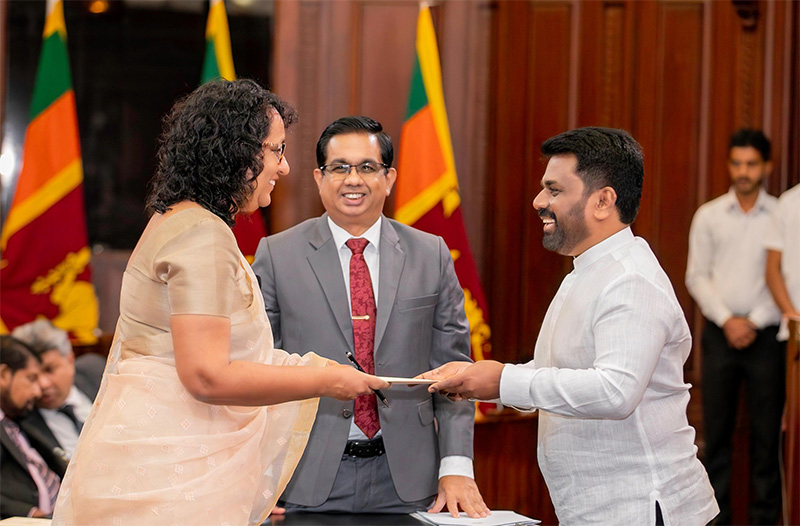
* One-time LTTE mouthpiece TNA is no more
* N & E Tamil speaking representation enhanced
* Fresh look at Sarath Fonseka’s performance at 2010 Prez poll in North required
The new government’s main challenge is ensuring the full implementation of the IMF-led post-Aragalaya economic recovery in line with the Economic Transformation Bill approved by the previous government without a vote. Whatever the side-shows, the focus not only of the government but the Parliament should be on preparing the country to resume debt repayment in 2028 or be ready to face the consequences.
By Shamindra Ferdinando
In a way it was a great thing for the country that the National People’s Power (NPP) scored an emphatic victory at the Nov. 14 general election. Now the Janatha Vimukthi Peramuna (JVP)-led NPPers can have no excuses for not being able to fulfill their promises as would have been the case if the preceding September Presidential election outcome was repeated with the combined Opposition having the lion’s share of the vote, which would have left the country with a virtual hung Parliament of no benefit to anyone other than creating a parliamentary stalemate, leading to fresh political chaos.
We will, however, grant the fact they have a very tall order to fulfill after the previous governments having virtually signed away our sovereignty with the deals they had inked during their tenures.
But we do have a nagging suspicion about someone working in not so mysterious ways against us behind the scene, after what the former US Secretary of State, John Kerry, publicly stated not too long after the defeat of President Mahinda Rajapaksa at the 2015 presidential election when he crowed to the whole world how they had spent several hundred million dollars for regime change operations at the time in several countries, including Sri Lanka. Then we also know since then how a US engineered coup ousted the popularly elected Prime Minister of Pakistan Imran Khan by way of parliamentary and military shenanigans, and then the more publicised way they ousted Prime Minister Sheikh Hasina of Bangladesh and then virtually ruined that country as was the case during the Aragalaya here in 2022 to oust the legally elected President, with a wide mandate, Gotabaya Rajapaksa.
The NPP has accomplished the impossible, even in the North, in the form of securing the Jaffna electoral district at the recently concluded parliamentary election. The NPP obtained three seats, nothing but a historic watershed.
The ruling party also won the Vanni electoral district, the scene of some of the bloodiest fighting during the Eelam War IV (Aug 2006-May 2009). Securing Jaffna and Vanni consisting of Vavuniya, Kilinochchi and Mullaitivu administrative districts, is as difficult as eradicating the conventional fighting capability of the Liberation Tigers of Tamil Eelam (LTTE). The NPP won two seats in the Vanni.
The final phase of the ground offensive was conducted in a corner of the Vanni electorate where LTTE leader Velupillai Prabhakaran met his maker.
The NPP secured two seats in Trincomalee and one in the Batticaloa districts, whereas Digamadulla gave President Anura Kumara Dissanayake’s party four more seats. Altogether 12 out of 29 parliamentary seats available in the five above-mentioned electoral districts ended up with the NPP.
The NPP delivered the stunning blow to those who still pursued separatist agenda, regardless of the LTTE’s demise over 15 years ago. The combined armed forces brought the war to a successful conclusion in May 2009.
The Illankai Tamil Arasu Kadchi (ITAK)-led Tamil National Alliance (TNA) that dominated the Northern and Eastern provinces since 2001 hadn’t been in the fray at the 2024 general election. The TNA that had been in the grip of the LTTE, during 2004-2009, disintegrated 15 years after the end of war, with the ITAK unceremoniously ending the partnership. Ex-TNA members, EPRLF, TELO and PLOTE contested the general election under the ticket of Democratic Tamil National Alliance (DTNA).
The ITAK obtained seven seats (Batticaloa three, Jaffna one, Vanni one, Digamadulla one, Trincomalee one) whereas DTNA won just one (Vanni one). It would be pertinent to mention that ITAK and DTNA fielded a common list for the Trincomalee district to ensure a split in the Tamil vote wouldn’t cost the community much valued representation therein. ITAK Trincomalee leader Kathiravelu Shanmugam Kugathasan, who replaced R. Sampanthan in Parliament at the last Parliament, won that seat.
In addition to the seven elected, the ITAK that contested under the ‘House’ symbol won one National List slot. Ahila Ilankai Tamil Congress (AITC) was the only other party to secure a seat (Jaffna/ Gajendrakumar Ponnambalam) while Independent Group 17 (Jaffna/ Ramanathan Archuna) won one. Altogether Tamil political parties obtained 11 seats, one less than the NPP.
M.A. Sumanthiran (ITAK/Jaffna), Dharmalingham Siddharthan (DTNA/Jaffna) and Sashikala Nadarajah (DTNA/Jaffna), widow of slain ITAK MP Nadarajah Raviraj were some of the big losers. In the east, one-time Chief Minister of the Eastern Province Sivanesathurai Chandrakanthan alias Pilleyan, formerly of the LTTE, failed to retain his Batticaloa district seat. Former LTTE field commander and ex-lawmaker Vinayagamoorthy Muralitharan aka Karuna Amman made an unsuccessful bid to re-enter Parliament also from the Batticaloa district.
In the previous Parliament, there had been 16 MPs representing five Tamil political parties (ITAK, AITC Eelam People’s Democratic Party [EPDP], Tamil Makkal Viduthalai Pulikal [TMVP] and Tamil Makkal Thesiya Kuttani [TMTK]. Last week’s poll eliminated EPDP, TMVP and TMTK while new entrant NPP created political history by winning 11 seats.
In spite of the humiliating setback suffered by those who had been previously in Parliament, the NPP tally has increased the total strength of the Tamil-speaking group representing N & E in Parliament. Perhaps, the successful formation of NPP’s Tamil-speaking wing may influence other political parties to re-examine their overall political strategy. They may not have any other alternative as failure to do so can further weaken their position at the forthcoming Provincial Council and Local Government polls. PC and LG polls are expected to be held next year.
Shanakiyan Rasamanickam, who re-entered Parliament with a convincing win in Batticaloa, consolidated his position, within the party and the district, due to ITAK’s admirable performance there. If not for three Batticaloa seats, ITAK aka Federal Party would have been in an utterly embarrassing position. Batticaloa electoral district is the only one that the NPP couldn’t win. Therefore, the outspoken Rasamanickam can be really happy to have thwarted the NPP in the eastern district.
Now to bury the hatchet between the two or, more correctly, the three literally warring communities here, NPP will have to think out of the box to find a solution that may be by way of sharing power at the centre rather than the periphery, as was successfully done under the Donoughmore Constitution.
Accountability issues
At the presidential election held in Sept. the NPP couldn’t win at least one electorate in the North but did so well several weeks later, it could win Jaffna and Vanni electorates. If not for that sterling performance, the NPP couldn’t have secured an unprecedented 2/3 majority. President AKD should be ever grateful to the northern and eastern electorates for facilitating a 2/3 majority.
Since the introduction of the proportional representation at the 1989 Parliamentary election, no party succeeded in securing a 2/3 though many alleged the Rajapaksas abused such huge mandates. They were, of course, referring to the UPFA securing 144 seats and 145 seats at the 2010 and 2020 general elections, respectively. For a simple majority, the winning party needs 113 seats while 2/3 means 150 seats.
Against the backdrop of NPP’s victory in the N & E, the new Parliament should review Sri Lanka’s response to post-war accountability issues. Since the eradication of the LTTE, the TNA propagated politically motivated unsubstantiated war crimes allegations, both here and abroad. Finally, the treacherous Yahapalana government (2015-2019) betrayed the war-winning armed forces at the Geneva-based United Nations Human Rights Council (UNHRC) in Oct 2015. The accountability resolution that had been co-sponsored by the US-led grouping and Sri Lanka was meant to pave the way for a new Constitution aimed at doing away with the country’s unitary status.
Interestingly, the war-winning Army Commander, Sarath Fonseka, who had been promoted to the rank of Field Marshal, in March 2015, served in that Yahapalana Cabinet, chaired by President Maithripala Sirisena. The role played by the then Premier Ranil Wickremesinghe and the late Foreign Minister Mangala Samaraweera in that despicable act is in the public domain. The failure on the part of Fonseka, who served President Sirisena’s Cabinet to vigorously oppose the government move is still a mystery.
The writer repeatedly discussed the failure on the part of Parliament and urged concerned political parties to raise the Yahapalana-TNA Geneva operation after the same lot fielded Fonseka as the common presidential candidate in 2010. Although Fonseka lost the contest by a massive 1.8 mn votes to war-winning President Mahinda Rajapaksa, he handsomely won the Jaffna, Vanni, Trincomalee, Batticaloa and Digamadulla electoral districts at the same election.
The NPP’s excellent showing in the N & E at the recently concluded general election should be examined taking Fonseka winning the former war zones 14 years ago.
Having alleged Fonseka’s Army of war crimes throughout the northern campaign, the TNA had no qualms in backing the Sinha Regiment veteran. Unfortunately, political parties represented in Parliament never bothered to raise TNA’s duplicity. Instead, all of them shamelessly and brazenly played politics with the issue, seeking petty political advantage at the expense of the armed forces. There hadn’t been a single instance of a war-winning country betraying its armed forces hitherto anywhere in the world. It was only the Maithripala Sirisena/Ranil Wickremesinghe govt. that achieved that dastardly act.
The JVP, though being not part of the Yahapalana Cabinet, never opposed the government’s move against the armed forces. However, the NPP’s victory in the North, perhaps would give an opportunity for President AKD, who is also the Defence Minister and Commander-in-Chief of the armed forces, to address the issue at hand afresh. President AKD retained the Defence portfolio when the new Cabinet of Ministers was sworn in last Monday.
The developing situation in the North may help post-war national reconciliation efforts. Successive governments deliberately allowed further deterioration of relations between the two communities by not taking apt remedial measures. Those who propagated lies were allowed to do so much to the disappointment of the armed forces. Parliament turned a blind eye even when the US and Australia et al denied visas to retired and serving officers and US imposed travel ban on the then Army Commander Gen. Shavendra Silva, the incumbent Chief of Defence Staff (CDS). Maj. General Chagie Gallage, now retired, is another victim of external reprisals.
Maaveerar Naal (Great Heroes’ day)
The Tamil Diaspora must have been quite surprised by the outcome of the general election. Some interested parties played down the importance of NPP victory in the North on the basis of low turnout of voters. It would be interesting to observe how the Diaspora and political parties here mark this year’s Maaveerar Naal. Commencing 1991, the LTTE used to celebrate Nov. 21-27 week as Great Heroes Week. During the period the group wielded power, the weeklong celebrations and activities received even international media attention.
This year, Maaveerar week is scheduled to commence on Nov 21 (tomorrow), the day the 10th Parliament meets. What would those elected from the NPP, ITAK and other parties do this year? Would interested parties seek to cause some unnecessary commotion in a bid to embarrass the government. Let us hope the government would handle the situation cautiously as opportunistic elements on both sides seek to exploit the developments. ITAK’s Sivagnanam Shritharan paid tribute to fallen Maaveerar at Kanagapuram, Kilinochchi.
The NPP’s unexpected victory in the north may compel not only Tamil Diaspora but Western countries, particularly Canada, to review their position.
Canada declared May 18 as Tamil Genocide Remembrance Day as Premier Justin Trudeau’s government sought to appease Canadian voters of Sri Lankan origin. Canada cannot under any circumstances ignore the Tamil vote received by the NPP as people discarded unsubstantiated war crimes allegations directed at the government, for the second time. Had the northern electorate believed the Army wantonly killed civilians on the Vanni east front in 2009, as alleged by the UN, they wouldn’t have voted for Fonseka. Perhaps, the people wanted the government to bring the war to an end at any cost. Having waged two terror campaigns in 1971 and 1987-1990, the JVP should be able to comprehend the need and the responsibility on the part of the government of the day to take whatever measures necessary to deal with the challenge.
The NPP was formed in 2019 just months ahead of the presidential election as the JVP realized it couldn’t push ahead on its own but needed wider public support. The NPP achieved that with ease within six years.
In August 2006, the then President Mahinda Rajapaksa went ahead with an-all-out campaign against the LTTE after failing to convince them to negotiate for a final settlement. President Rajapaksa had no option but to go on the offensive after the failed LTTE assassination attempts on the then Army Commander Lt. Gen. Fonseka (April 2006) and then Defence Secretary Gotabaya Rajapaksa (Oct. 2006). The TNA remained committed to the LTTE’s murderous cause until the very end.
A matter for serious concern
An unbelievably large number of voters skipped the general election. All political parties, including the NPP, should be concerned over the unprecedented deterioration of voter interest, especially after a thrilling presidential election brought AKD to power just six weeks ago. A substantial increase for the NPP from 5,634,915 votes (42.31 %) at the presidential to 6,863,186 (61.56%) at the general election just weeks later shouldn’t be allowed to divert attention to the massive drop in public interest. Well over half a million rejected votes, too, must worry all.
The NPP won 159 seats, including 18 National List slots, nine more than required for a 2/3 majority. At the presidential election 3,520,438 voters refrained from exercising their franchise. But that figure increased to 5,325,108 at the general election while the number of rejected votes, too, recorded a significant increase. According to the Election Commission, at the presidential poll, the number of rejected votes was 300,300 while the general election recorded 667,240 rejected votes.
What really caused such an increase in the number of rejected votes was when the number of polled votes dropped from 13,619,916 votes (79.46%) to 11,815,246 (68.93%)? In other words of the 17,140,354 people eligible to vote, a staggering percentage decided not to. Voter apathy is not healthy. Not healthy at all.
A rethinking on the part of the SJB and New Democratic Front (NDF/consisted of former SLPP lawmakers and UNP) is necessary as they couldn’t at least retain the number of votes received at the presidential election. SJB that polled 4,363,035 votes (32.76 %) at the presidential poll could muster only 1,968,716 (17.66%) at the general election, while NDF could secure 500,835 (4.49%) having polled 2,299,767 (17.27%) just weeks ago. The SJB and NDF ended up with 40 seats (including five NL slots) and five seats (including 2two NL slots) while the SLPP that won 145 seats at the 2020 general election had to be satisfied with three seats, including one NL slot.
Both Sajith Premadasa and Ranil Wickremesinghe should seek remedial measures before the EC announced PC and LG polls. Perhaps, divided groups have to unite under one banner either under SJB or UNP or face annihilation at the PC and LG polls. For Premadasa and Wickremesinghe time seemed to have run out.
The SLPP obtained 350,429 votes (3.14%) at the general election up from 342,781 (2.57 %) at the presidential election. For the SLPP a rapid recovery process will never be possible as its only NL member and leader of the minute group Namal Rajapaksa is likely to be the target of corruption investigations. The SLPP group consists of Namal Rajapaksa, newcomer Chanaka Sampath (Galle) and D.V. Chanaka (Hambantota).
Fifteen political parties represented the last Parliament. They were SLPP (145), SJB (54), ITAK (10), NPP (03), EPDP (02), AITC (02), TMVP (01), SLFP (01), MNA (01), TMTK (01) TMTK, ACMC (01), NC (01), SLMC (01), UNP (01) and OPPP (01). The new Parliament will be represented by 13 political parties and one independent group – namely NPP 159, SJB 40, ITAK 08, NDF 05, SLPP 03, SLMC 03, Sarvajana Balaya (NL), UNP (01), DTNA (01), ACTC (01), ACMC (01), Jaffna Ind. Group 157 (01) and SLLP (01).
Midweek Review
‘Ramayanizing’ Sri Lanka by Courtesy of SriLankan Airlines
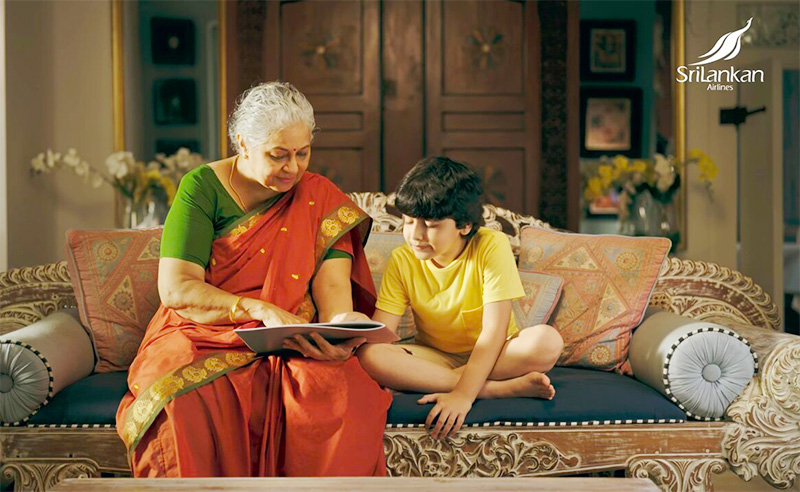
 (The author is on X as @sasmester)
(The author is on X as @sasmester)
SriLankan Airlines’ five-minute commercial promoting the so-called ‘Ramayana Trail’ in Sri Lanka is being accepted very naively as an enticing and heartwarming advertisement by Sri Lankan and Indian viewers across social media. Predictably, the video has also gone viral. It shows a young child being educated about aspects of the Ramayana legend by his grandmother, while zooming in on locations in Sri Lanka where local mythology has made associations with some narratives of the Ramayana. Beyond the rave reviews of the commercial in Sri Lanka and India, an astute observer would in fact see it as a very problematic rendition for one simple reason. That is, when viewed from the perspective that it is paid for by SriLankan Airlines, a government entity funded by local taxpayers, what is said and promoted, in effect, would be through the voice of the state and the government. Therefore, for instance, when the granny tells the child, “all the places in Ramayana are real. Today, we know Lanka as Sri Lanka”, in one careless and ill-thought-out fell swoop, SriLankan Airlines has given credence to belief as evidence, myth as history, fiction as fact, asserting Ramayana’s Lanka as present-day Sri Lanka when numerous Indian renditions of the story locate parts of Ravana’s Lanka well within contemporary India.
Admittedly, the commercial will certainly attract Indian tourists and pilgrims, particularly from the northern parts of the country. The question that comes to mind however is whether this is the only way to promote the trail? Many of my friends have already made the trip without the nudging of the new advert. The advert also begs the question, whether local sensitivities and cultural meanings linked to the Sanskrit epic were ever considered when it was conceptualised, or at any point even after in the process. More importantly, who gave the final seal of approval?
The hegemonic narrative in the commercial is what one might call a ‘North Indian Brahminic’ approach to the Ramayana, which erases other versions of the epic including the Ravana-centric myths in Sri Lanka itself. Unfortunately, it is this hegemonic narrative that has been making the rounds for some time in India with Rama as its protagonist and Ravana as the absolute villain, the all-evil-encompassing antagonist. In this rendition, it is no longer simply an ancient epic or a story of innocence and faith, but a contemporary political narrative with considerable cultural power, authority and reach, performed and used by the state itself. This narrative feeds directly and indirectly into the somewhat imperialist designs of certain contemporary Indian political forces so aptly encapsulated in the hegemonic political concept of Akhand Bharat. However, in real life, understandings of the Ramayana have never been this simple or linear.
The title of Prof A.K. Ramanujan’s seminal essay, ‘Three Hundred Ramayanas: Five Examples and Three Thoughts on Translation’ offers a clear indication into the many versions of the Ramayana and the complex narrative traditions of both India and lands beyond where aspects of the epic have become part of local myths, folktales or performance traditions. Interestingly, Prof Ramanujan’s essay was dropped from the Bachelor of Arts in History (Honours) degree programme at Delhi University in 2011 amidst considerable agitations lead by Akhil Bharatiya Vidyarthi Parishad, a right-wing students’ organization, precisely because its contents complicate the way in which the political narrative that is the Ramayana today is presented.
It is truly unfortunate that the narrative given prominence in the Sri Lankan Airlines advert stems from this dominant, parochialized and utterly politicized version of the Ramayana which sweepingly demonizes Ravana. This broad-brush demonization reaches its peak in India during Dussehra, the festival during which effigies of Ravana are burnt to symbolize the vanquishing of evil (Ravana) by good (Rama). However, interestingly, in many of India’s tribal areas, the narrative is closer to that in Sri Lanka, where Ravana is seen as a hero, and importantly as a source of knowledge and ethics. In 2017, in the Katol area in the State of Maharashtra, tribal people forced the local administration to stop the burning of Ravana effigies during Dussehra. In Nashik, also in Maharashtra, tribal folklore suggests that the area was part of Ravana’s kingdom and was governed by his sister Surpanakha along with her husband. This understanding of Ravana’s kingdom is nowhere near Sri Lanka as promoted by SriLankan Airlines. In some tribal Gond villages in Maharashtra, Ravana is worshiped as a god, clearly evident during Dussehra. He is also worshiped in many other locations including, Mandsaur and Ravangram in Madhya Pradesh; Bisrakh in Uttar Pradesh; Kangra in Himachal Pradesh; Mandya and Kolar in Karnataka, and Jodhpur in Rajasthan. Similar practices are seen in the tribal areas of Chhattisgarh, Jharkhand and West Bengal as well.
In Tamil Nadu in India’s south, there are many people who align themselves with ‘Dravidian’ ideologies, promoting Ravana as a politico-cultural icon. One source of motivation for this stems from the manner in which Ravana is eulogised for his valour in Kambaramayanam – the Tamil version of the Ramayana – even though here, too, the main premise of the hegemonic account is maintained. The more obvious source for this reverence is Ravana Kaaviyam written by Pulavar Kuzhandhai and published in 1946. It is a 20th century attempt to deconstruct the Ramayana based on the argument that the mainstream Ramayana was an attempt to establish the supremacy of the ‘Aryan race’ who lived in northern India, over the ‘Dravidians’ in the south. Here, Ravana is seen as a ‘Dravidian’ king, and in essence very similar to the Sinhala renditions of Ravana. In both these popular Sinhala and Tamil versions, he is presented as a noble king, epitomising justice, courage and compassion, and also a wise person and scholar. While categories such as ‘Dravidian’ and ‘Aryan’ as ethno-cultural references as opposed to linguistic references are not part of my academic vocabulary, the attempted deconstruction is nevertheless interesting as it also offers a glimpse into the manner in which 20th and 21st century hegemonic North Indian politics are understood by some sections in the country’s south.
What is evident is that a counterculture movement is currently mobilising tribal and Dalit communities in several Indian states such as the above to vindicate Ravana and ‘rescue’ him from the negative light in which he has been portrayed in the current dominant version of the Ramayana, the one SriLankan Airlines has blindly based their commercial on. Due to this blindness, these interesting and telling complexities and intriguing political and cultural references have no resonance whatsoever in the SriLankan Airlines advert.
I come again to the question posed at the beginning of this essay: is this the only way to do such a promotion funded by the Sri Lankan government? Cannot the state-funded national carrier attract Indian tourists and pilgrims by presenting the places the local tourism industry and Indian tour and pilgrimage operators want these travellers to visit by offering the local interpretation? After all, Sri Lanka does not have a performance tradition of the Ramayana and hardly any concrete memories of the epic and its numerous episodes as a specific text. Instead, fragments of these exist scattered on the landscape throughout the island as places where specific incidents related to the Ramayana had supposedly happened. These manifest through several local folk tales and myths where Ravana is ever present as a local hero and Rama is virtually absent except when contextually required. Moreover, some of these places refer to many other stories too, which have been historically more prominent locally than the Ramayana-related narratives. However, right now, the Ramayana ‘stories’ are given considerable local and national prominence as a rational economic decision taken by people in these areas in the interest of tourism which translates into simple commercial gain. This is understandable.
The question is, what prevented SriLankan Airlines from beginning its advert with the famed flying machine of Ravana known in Sinhala as dandu monaraya (and in India as Pushpaka Viman), often referred to in influential local interpretations as the first of its kind, and predating the Wright Brothers’ invention? Is it a lamentable lack of imagination and creativity, or sheer ignorance? After all, the logo of Air Lanka, the predecessor to SriLankan Airlines, found its genesis in this story, which continues to date in a different form. This way, potential tourists could have been shown the same locations referred to in the current advert, but viewed from the sky, as if one were flying in the dandu monaraya like Ravana may have done in mythical times. This would also be very similar to the way ancient Sri Lankan poets of the sandesha tradition described local landscapes and built environments from the point of view of a bird in flight taking a message to a king, a Buddhist monk or some other such personality. Salalihini Sandeshaya and Hansa Sandeshaya written in the 15th century during the Kotte Period come to mind.
In this manner, the core places in the ‘Ramayana Trail’ could have been flagged for tourist and pilgrim interest while maintaining a distinct sense of local culture and identity that SriLankan Airlines should ideally be marketing. This is not to make Indian tourists and pilgrims cast aside their own beliefs, narratives and interpretations when visiting Sri Lanka. That is their right and not in any doubt. The crux of the matter is, why would SriLankan Airlines be so north Indian and Brahminic, and willingly succumb to the dominant and exclusivist version of the Ramayana promoted by the Indian state and many ordinary people to the exclusion of all other narratives in India itself? By doing so, SriLankan Airlines is taking itself, the government, the state and by extension all of us Sri Lankans, right into the bosom of the Indian state’s cultural and political colonialism typified by the concept of ‘Akhand Bharat’ as noted earlier. If picked up by opposition forces in the politically polarised Sri Lankan society, the advertisement can become a political statement, which has the potential to create needless rifts within Sri Lanka itself.
But then again, one cannot expect these complexities to be understood by the decision makers at SriLankan Airlines who obviously are far removed from the local cultural terrain as well as existing cultural hegemonism emanating from across the Palk Strait. The national carrier, in its haste to soar, as well as absence of foresight and lack of enlightenment of local culture has imprisoned Sri Lanka in a hegemonic North Indian politico-cultural narrative. This is also a sign of lacking national pride despite constant and oftentimes annoying rhetoric. One can only hope, the Sri Lankan government will revisit how this was done in the first place and ensure this kind of culturally crude reductionism of our own traditions and folklore does not take place in the future in state-sponsored activities carried out with public funds.
I cannot but be reminded of a quote by Voltaire when reflecting on the manner in which politics of this kind flow, emerge, and reemerge in Sri Lanka while nothing is ever learned: “It is difficult to free fools from the chains they revere.”
Midweek Review
Lone Voice of Reason
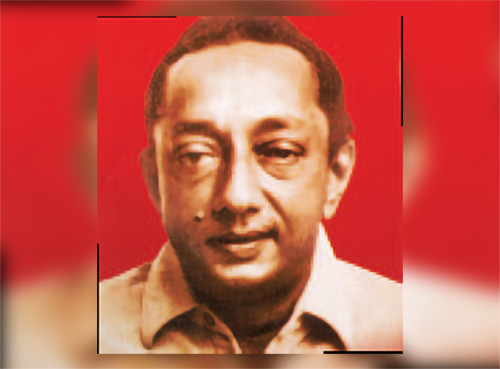
By Lynn Ockersz
There’s this ‘narrative’,
In the ‘Isle of Smug Smiles’,
That the time’s ripe,
To craft the epitaph,
Of the political opposition,
Now that the restive House,
By the idyllic waterway,
Is in the grip of a single party,
In all too familiar history,
But there’s a glowing example,
From the distant eighties,
When Sarath Muththetuwegama,
Lone Member of the CPSL,
Won the admiration of the country,
Through his inspiring speeches,
Clinching the timeless point,
That Quality is superior to Quantity.
-
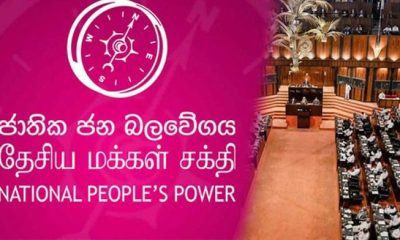
 News6 days ago
News6 days agoNPP appoints two defeated candidates as NL MPs
-
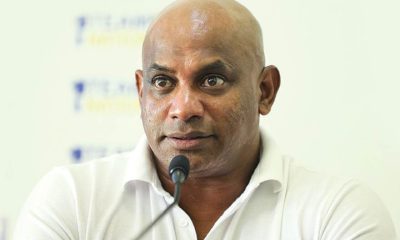
 Sports2 days ago
Sports2 days agoPathum will become world’s best batter, says Jayasuriya
-
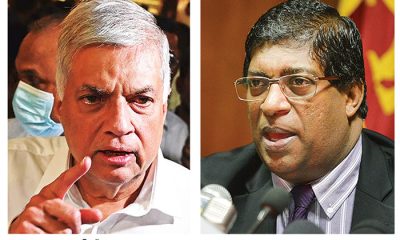
 News5 days ago
News5 days ago‘Gas Cylinder’ explodes; Ranil flays NDF Secy. for submitting Ravi’s name
-

 Midweek Review4 days ago
Midweek Review4 days ago‘Ramayanizing’ Sri Lanka by Courtesy of SriLankan Airlines
-
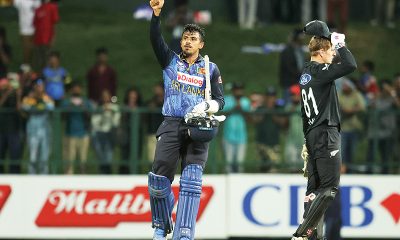
 Sports5 days ago
Sports5 days agoMaking batting compulsory for bowlers has worked – Theekshana
-

 Sports3 days ago
Sports3 days agoSri Lanka’s cricket revival continues
-
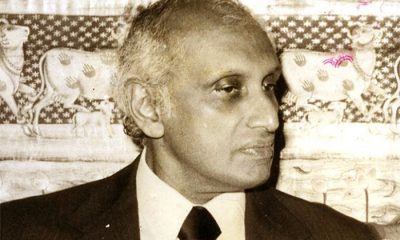
 Features4 days ago
Features4 days agoShould we go back to build another Southern Order?
-
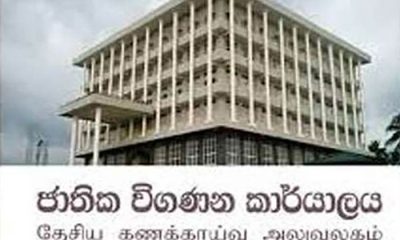
 News1 day ago
News1 day agoAbout 1,000 permits issued to SL migrant workers for electric vehicle imports misused











